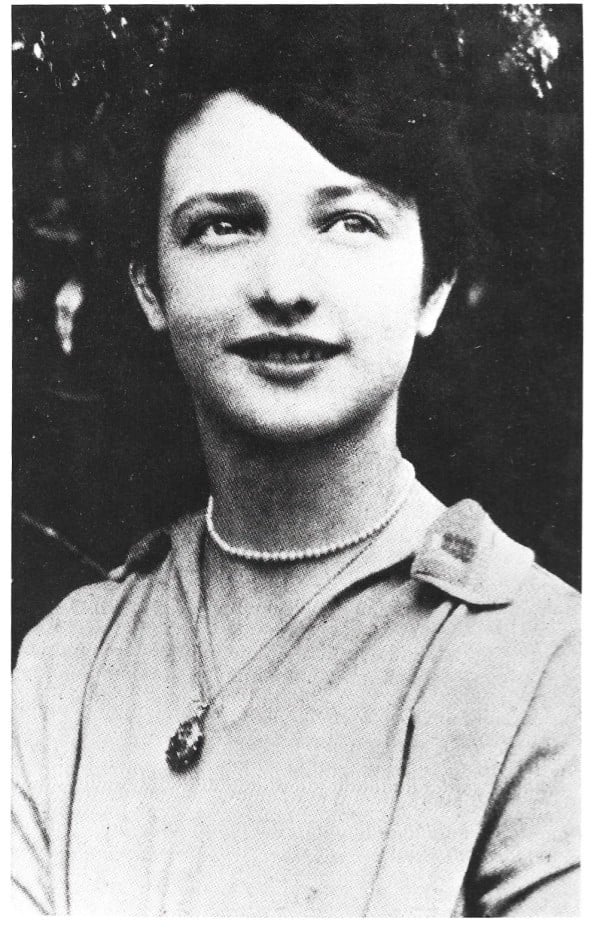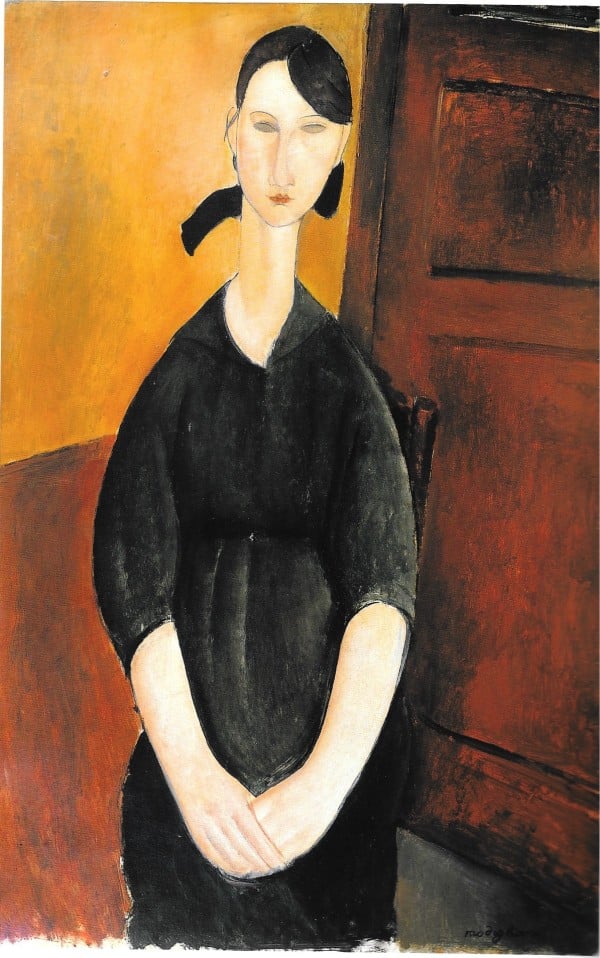Auctions
The True but Secret Story behind Amedeo Modigliani’s Favorite Model Paulette Jourdain
Portrait of Paulette Jourdain will be featured in the Alfred Taubman sale.

Image: Courtesy Kenneth Wayne.
Portrait of Paulette Jourdain will be featured in the Alfred Taubman sale.

Kenneth Wayne


Amedeo Modigliani, Portrait of Paulette Jourdain (1919).
Image: Courtesy of Sotheby’s.
As an American graduate student who was living in Paris in the early 1990s, I mentioned to my friends Billy Klüver and Julie Martin that I was a major fan of Amedeo Modigliani‘s art. Billy and Julie had just authored the wonderful book Kiki’s Paris: Artists and Lovers, 1900–1930. Billy immediately said, “You should go interview Modigliani’s model Paulette Jourdain, who lives very close to you.” I was stunned to learn that she was still alive, and that she lived within walking distance of me. It was May 1992, 73 years after Modigliani had made his famous portrait of her.
After looking up Jourdain in the phone book, I gave her a call, reaching her on the first try. She agreed to meet, so I grabbed my camera and audio recorder and then headed over, buying a 90-minute cassette tape en route.

Paulette Jourdain in 1919.
Image: Courtesy of Kenneth Wayne.
When we met, Paulette was poised and polite, with a crisp intelligence and a gentle soul. She naturally assumed the same position in her chair that she had in the Modigliani portrait: hands clasped, shoulders sloping, sleeves slightly pulled up her arm. She was perfectly willing to answer any question and did not seem in any rush for me to go. Her sun-filled apartment was filled with art books and photos of the various artists she had known including Modigliani, Pablo Picasso, and Chaïm Soutine. A large poster reproduction of Modigliani’s portrait of her with photos of the artist on either side, above a stand, occupied a section of her modest apartment, almost resembling an altar.
Pauline “Paulette” Jourdain (1904–1997) was born in the coastal town of Concarneau in Brittany. She came to Paris in the first part of 1919, not quite 15 years old, and moved into the apartment of Modigliani’s dealer, Léopold Zborowski, at 3, rue Joseph Bara in Montparnasse. At first she was a domestic worker but she quickly became an assistant to Zborowski in his home business operations—he did not have a gallery until 1926. It was at his residence that Paulette and Modigliani met on one of the artist’s regular visits and he immediately asked her to come to his studio around the corner at 8, rue de la Grande Chaumière to sit for a portrait. A photo of Paulette from 1919, the very year that Modigliani painted her portrait, shows a warm, smiling girl with a stylish haircut and a necklace. On Modigliani’s canvas, the spirited young woman sports a fashionable black ribbon in her hair.
Paulette said that the portrait was painted soon after her 15th birthday. She recalled that Modigliani made many drawings of her and that she came for numerous sittings, between her classes at school. She remembered that Modigliani’s pregnant girlfriend Jeanne Hébuterne quietly puttered around in the other room. She indicated that Modigliani painted quickly, and that he was quite confident, which is no surprise given his fame at the time. He called her “fillette,” or little girl, and would greet her with a “bonjour fillette!” when she walked up four floors to enter his studio.
At the end of their sessions, Modigliani had her buy rum for him across the street. Despite his drinking habits, she said that he was a very cultured man who sang arias from the Italian opera La Traviata when he painted and would often recite verses by the French poet Charles Baudelaire. He told her that Leonardo da Vinci’s Mona Lisa was his favorite painting at the Louvre. Modigliani’s portrait of Paulette is poignant and heartfelt. He ennobled her by painting her in a large format with grandeur and majesty. Apparently Modigliani was smitten with Paulette and wanted to make another portrait of her. Unfortunately, his poor health and untimely death on January 24, 1920, just a few months later, prevented that.
Paulette was present during Modigliani’s last, dying days. She helped Zborowski to make the funeral arrangements and tried to console Hébuterne, but to no avail; she took her own life less than two days after Modigliani passed.
Paulette soon posed for other artists, including Soutine and Kisling. She and Zborowski eventually had a daughter named Jacqueline in 1924. After working for Zborowski for 13 years, she struck out on her own, becoming a gallerist when he passed away in 1932.
Modigliani’s portrait of Jourdain has always remained particularly famous because of her special place at the end of the artist’s brief life. Apparently, he made drawings of her for another portrait, but none survived after his death.
At Sotheby’s on November 4 at the “Collection of A. Alfred Taubman: Masterworks” sale, this well-known painting with an estimate of $25 million–35 million may receive a second life.